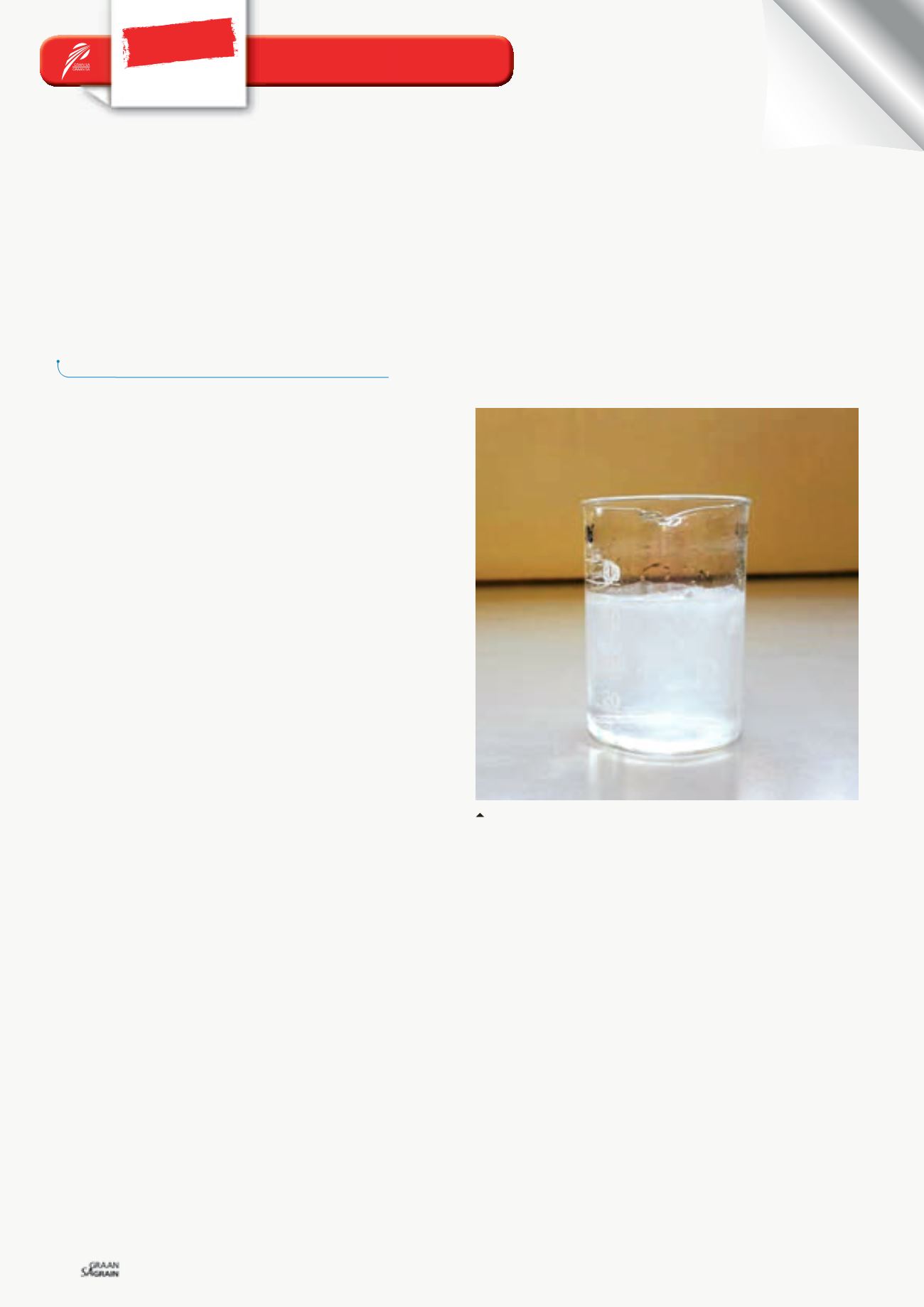

September 2015
34
FOCUS
Integrated pest control
Special
Revisiting adjuvants
and herbicides
HESTIA NIENABER,
ARC-Small Grain Institute, Bethlehem
A
djuvants can be defined as a substance that is added to the
spray solution to enhance or modify the action of an her-
bicide or the physical characteristics of the spray mixture.
Adjuvants are used to increase herbicide efficacy, but have
no herbicidal effects of their own.
Although there are many adjuvants on the South African market,
most adjuvants that are introduced to the South African market and
markets worldwide, are primarily used to make products more com-
patible with glyphosate.
This is mainly due to the fact that glyphosate is the most widely sold
herbicide worldwide. The correct choice of adjuvant could mean the
difference between excellent control and no control at all.
There are still producers who do not use adjuvants and this is mainly
because of the following reasons. Many doubt whether adjuvants
provide a financial benefit, some are discouraged by the number of
products to choose from, while others are simply not aware of the
benefits that adjuvants may offer.
Different adjuvants have different characteristics and therefore adju-
vants are chosen with specific outcomes in mind.
The choice of adjuvant can be very overwhelming when confronted
with several different types. Adjuvants can be divided into various
categories (B.L. de Villiers, 1998) to make the choice easier.
Adjuvant categories
Surfactants (surface active ingredient)
These substances lower the surface tension of the spray solution
droplet, which usually increases droplet spreading. The droplet is
retained by the target leaf and is able to spread more easily on the
leaf surface. These surfactants also lower the contact angle between
the droplet and the leaf surface, thus bringing more herbicide into
contact with the leaf surface.
Oils
Oil adjuvants can be characterised by a white colour change
(
Photo 1
) when the adjuvant is included in the spray tank/mixture. Oil
adjuvants are used to increase herbicide penetration by disrupting the
waxy layers on the cuticle of the leaf surface. Oil adjuvants can also
aid in the spreading and retention of the droplet on the leaf surface.
Salts
These adjuvants have two major benefits: It conditions hard water to
minimise the potential negative impact from mineral deposits inter-
acting with the herbicide and it helps to transport glyphosate across
the surface membrane of the target weed, allowing for good cover-
age and product uptake by the plant.
Thus, these adjuvants are excellent in overcoming salt antagonism
from the water source (calcium, magnesium and sodium com-
pounds) and are used in South Africa with glyphosate for penetra-
tion and compatibility purposes.
Drift control agents and anti-evaporants
Drift control agents are used to ensure that as much of the spray so-
lution as possible reaches the target and to prevent off-target injury
to susceptible plants.
Buffers and acidifiers
Acidifying agents which contain sulphuric, citric or phosphoric acids
are normally effective in overcoming antagonism by salts of calcium,
magnesium and sodium in carrier water. Products that contain con-
tain acetic acid (organic acid), on the other hand, are normally used
to stabilise (buffer) the pH at desired levels (4 - 6) for certain her-
bicides if added in adequate amounts. Unregistered concentrated
acids should never be added to spray solutions.
Stickers
These adjuvants prevent wash-off caused by rain, loss by wind ero-
sion and extend the life of the herbicide on the leaf surface by stick-
ing the herbicide to the surface.
Research results
Extensive research on adjuvants and herbicide efficacy has been
White colour change when an oil adjuvant is added to water.

















